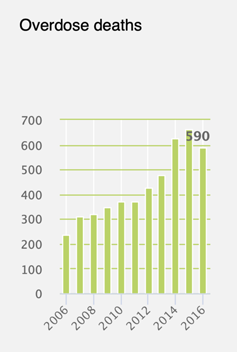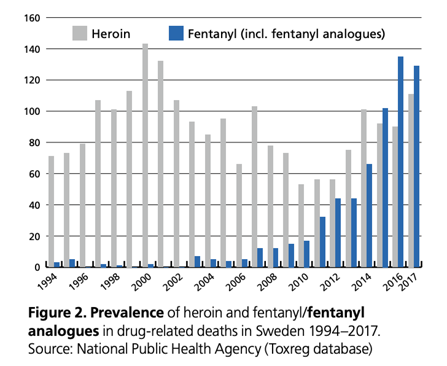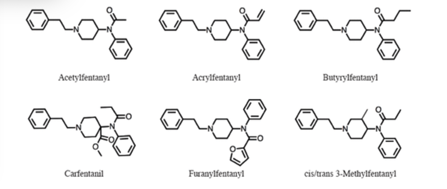Fentanyl’s Assault on Swedish Lives
Sweden has long been highly committed to the rights, health and welfare of its citizens. For the last several decades, the well-being of individuals, particularly children, has driven many well-liked public policies and government programs. But now, the assault of powerful and illicit fentanyl and similar drugs threatens the very fabric of this equitable society.
It’s not that drug abuse and addiction are new problems. Addiction to cannabis, cocaine and opioids like heroin have existed for many years. But then, the 2014 arrival of an illicitly manufactured form—fentanyl—significantly worsened the situation suffered by those vulnerable to drug use—especially those addicted to heroin or painkillers. For conditions to improve, it’s important to understand the extent of the problem.
What Is Fentanyl?
Fentanyl is an extremely powerful opioid painkiller that has been used in medical facilities for those in excruciating pain. As an opioid, however, it is also popular with any addicted person who can get their hands on it. Until 2014, any fentanyl in circulation on the illicit market was diverted from medical supplies. In 2014, new forms of fentanyl from illicit manufacturing facilities began to appear on the Swedish drug market.
In fact, fentanyl didn’t just arrive in Sweden at this time. Suddenly, fentanyl and several other drugs that were almost identical (called “analogues”) began appearing across Europe and the United States. For many years, there had only been a few drugs in the fentanyl family used in medical facilities. By 2016, there were 17 new forms of this powerful and dangerous drug available for sale from drug dealers. Quickly, an increasing number of drug users on both continents began losing their lives to this drug.
The History of Opioid Drug Losses in Sweden

This new drug has hit drug users in Sweden hard. Between 2006 and 2013, Sweden experienced a steadily rising loss of life to drug overdoses. Losses climbed each year, increasing from about 220 to nearly 500 in 2013. But in 2014, the year fentanyl arrived, they shot above 600 and were even higher in 2015. In 2016, they dropped slightly to 590. When a toxicology report was available for the deaths in 2016, it showed that 93% of the cases included an opioid.
Earlier on, this loss of life was largely due to heroin, but as more fentanyl was traded on the illicit drug market, this began to change. Between 2015 and 2017, fentanyl was stealing a rapidly increasing number of lives each year. On the following chart, you can see how the number of heroin deaths began a rapid decline after 2000 and how fentanyl losses across the country began to rocket in 2015.

Another way to look at the damage fentanyl caused: In October 2017, the number of people lost to overdoses of fentanyl or fentanyl analogues was higher than the number of people lost in traffic accidents.
About Fentanyl Analogues
Analogue drugs are not only chemically similar to other drugs, they also have similar effects. Some analogues are created by research chemists as they search for better solutions to health problems. Other analogues are specifically created to evade legal restrictions.

If laws exist to forbid the trafficking, sale and possession of fentanyl without a prescription, then all a chemist has to do is move a single molecule on the compound and create methylfentanyl. This new drug (or dozens like it) may be able to be possessed and sold as a legal drug until legislators get around to passing a new law banning it. In the image to the right, you can see how similar the chemical patterns of some of these drugs are.
This sleazy tactic has been used by international drug traffickers to escape penalties for manufacturing and smuggling this type of painkiller as well as hundreds of drugs categorized as “new psychoactive substances.” New forms of fentanyl or other drugs may remain legal for weeks, months or years until new legislation can be enacted.
The Potency of Fentanyl and Its Analogues
Some of these analogues are astonishingly powerful. Let’s take a closer look at the strength of various forms of fentanyl.
Potencies of opioid painkillers are measured in comparison to morphine. So morphine is assigned a “1” as a starting point.
- Morphine 1
- Hydromorphone 1
- Oxycodone 1.5
- Methadone 4
- Heroin 5
- Buprenorphine 40
- Fentanyl 50 to 100
- Acetyl-alpha-methylfentanyl 75
- Ocfentanil 90
- Remifentanil 100 to 200
- Sufentanil 500 to 1000 (maximum for human use)
- Carfentanil 10,000 to 100,000 (large animal veterinary use only)
Efforts are taking place across Sweden to curtail these deaths—both in local law enforcement activities and in trying to reduce the shipments of this drug from overseas, primarily from China. But no matter what actions are taken to penalize drug dealers or manufacturers, the lives of those who are already trapped in addiction must be saved.
For more than fifty years, the Narconon program has been used around the world to help those who are addicted recover their ability to choose sobriety. This is not a thirty-day program, nor is it one that replaces one addictive substance with another. This is a program that enables individuals to recover from their physical, emotional and mental need for drugs or alcohol. We are committed to helping the addicted on every continent recover their sobriety and honest enjoyment of life.
If you are seeking help understanding addiction and how it can be resolved, or you are looking for a drug rehabilitation facility for a loved one, please feel free to call us.


